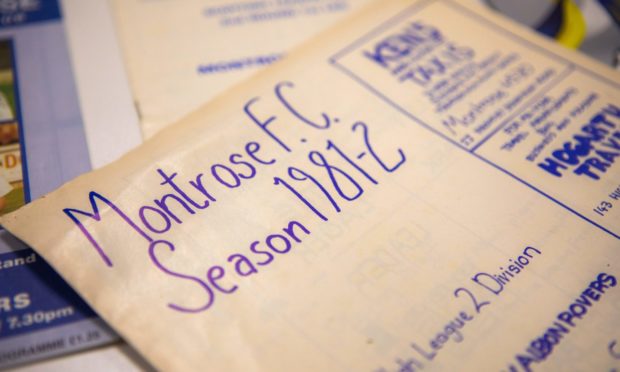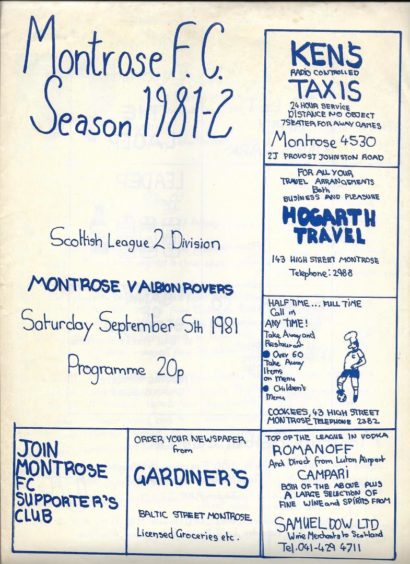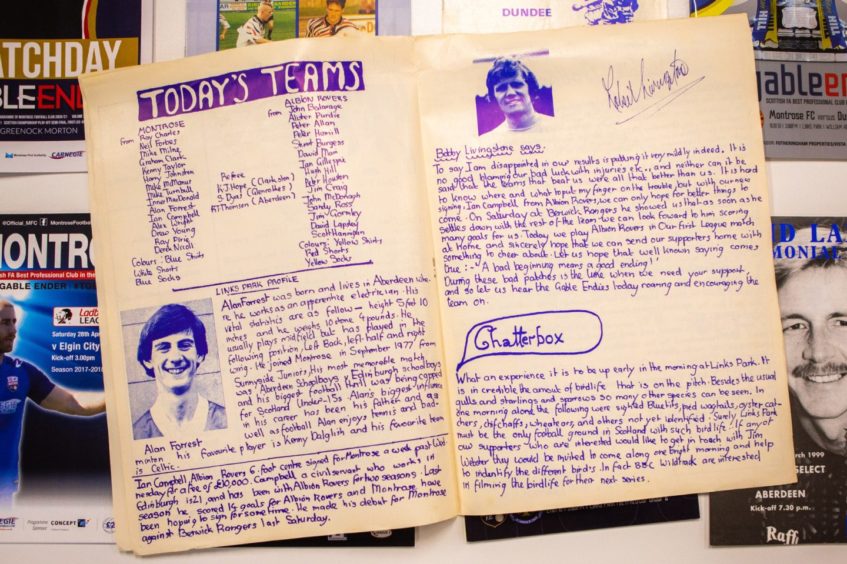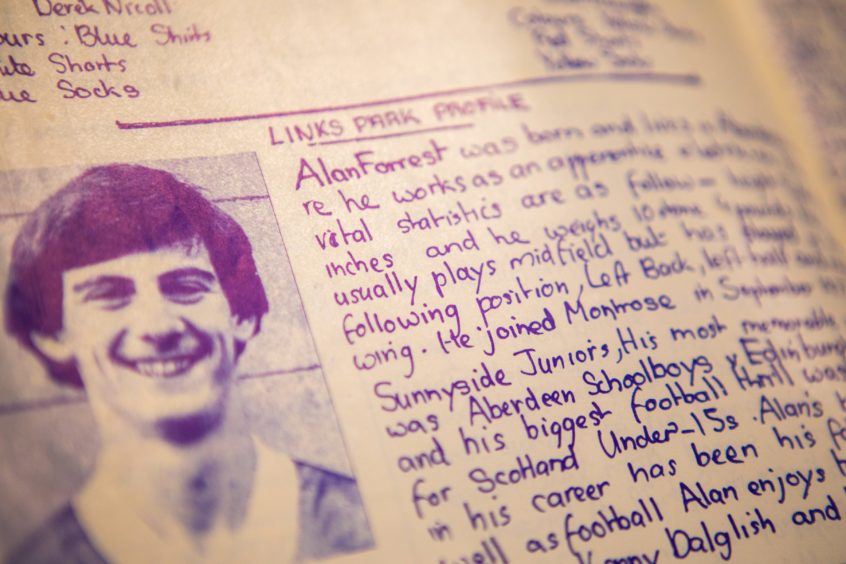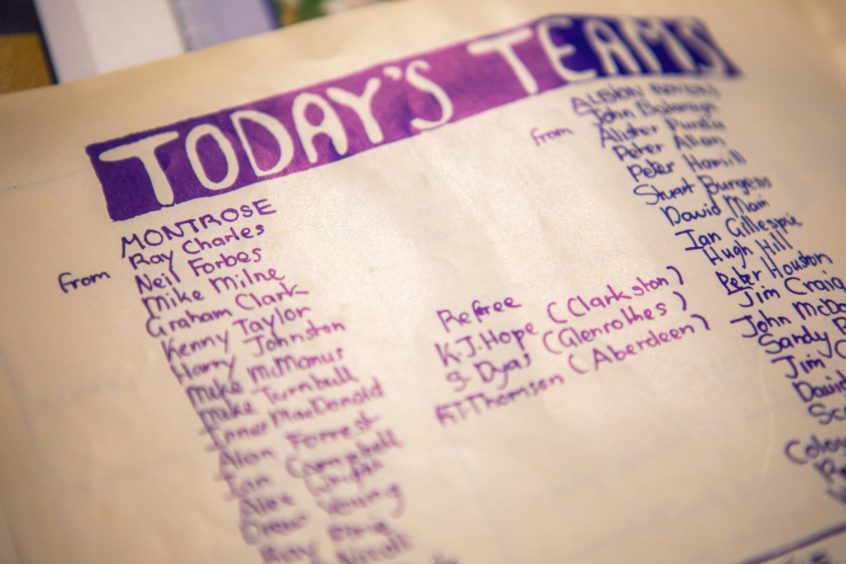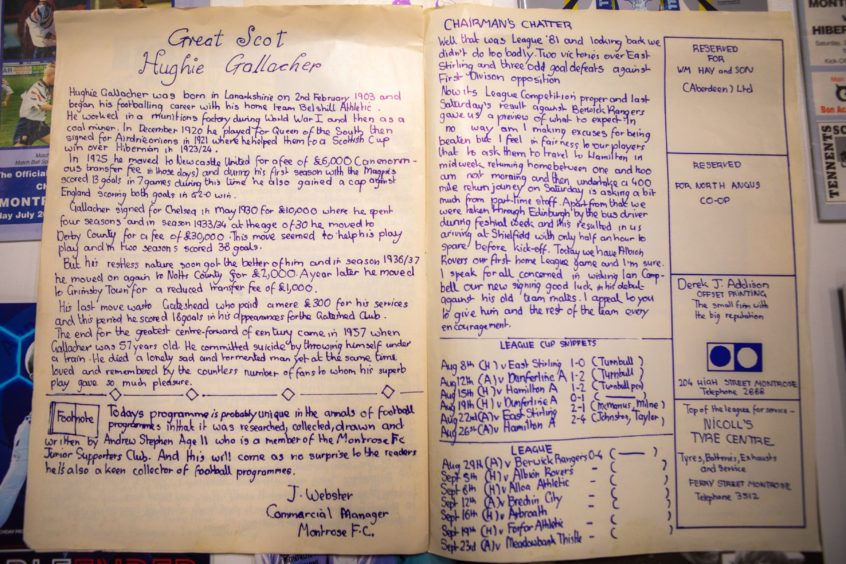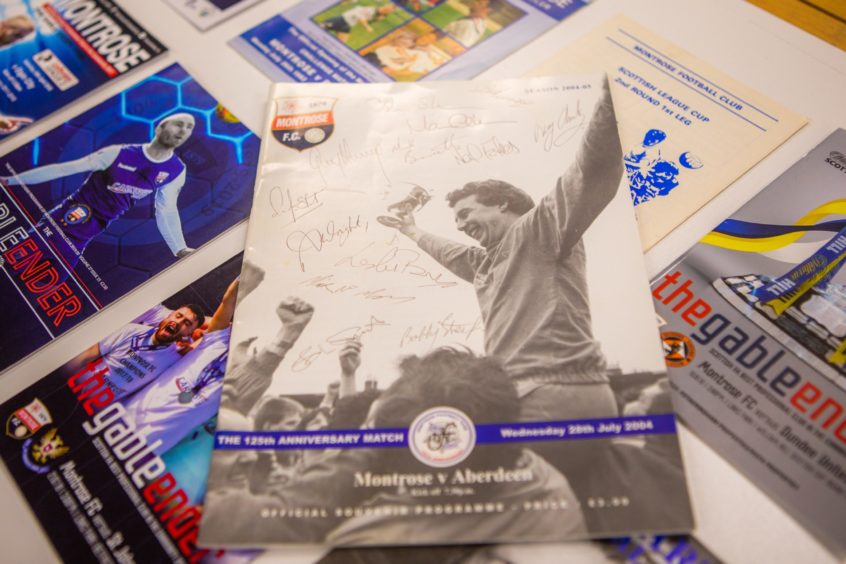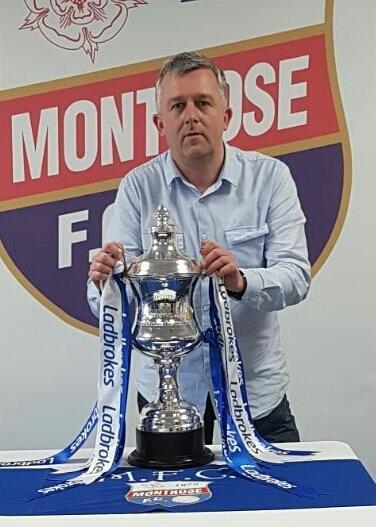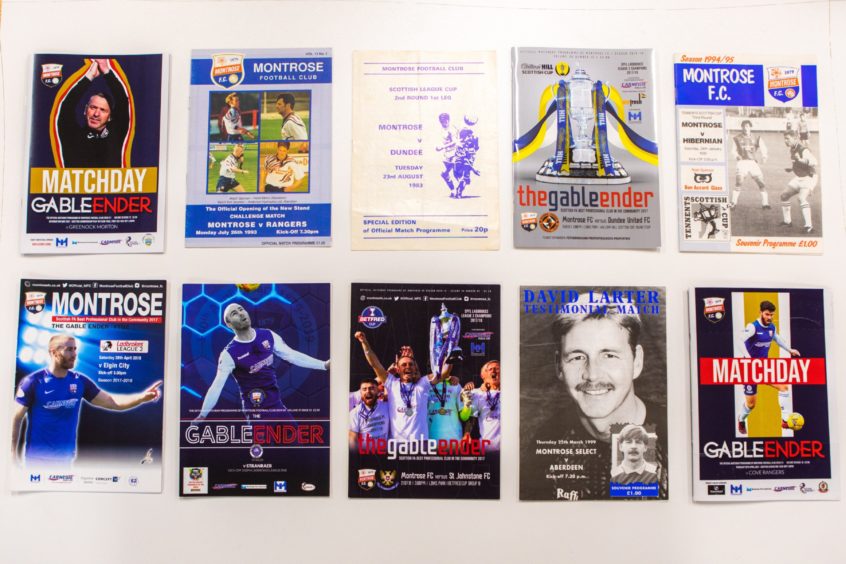Montrose FC fan Andrew Stephen was 12 when he produced a hand-written matchday programme and he’s never looked back.
The club published programmes for the opening cup games of the 1981-82 season.
Andrew was a member of the junior supporters’ club when he was asked to put one together for a league game against Albion Rovers by commercial manager Jim Webster.
Programmes continued until Jim Webster left the club in 1982 and the club decided to only issue programmes for cup games following his departure.
Andrew stepped in again at the start of the 1983-84 season.
He got together with his mates to produce the matchday programme.
The rest is history and Andrew has edited every issue ever since.
The first Montrose programme was produced in 1955
Programmes for several Scottish clubs exist from before the Second World War but routine issuing by most began when paper rationing ended in the post-war era.
The very first Montrose home programme was on August 20 1955 when the club regained entry back into the Scottish Football League.
Andrew got the Montrose FC bug when he started going to games in 1979.
“I went to Southesk Primary School where my dad was one of my teachers,” he said.
“The deputy head was Bill Coull who was Montrose FC secretary at the time.
“I first went to Links Park in April 1979 to see us lose 2-0 to Stirling Albion to goals from Kerr McGibbon and I’ve been going ever since.
“We had been doing programmes occasionally when I started going in the 1978-79 and 79-80 seasons but once Jim Webster started as commercial manager at the club he had some great ideas for the programme.
“I started to go along in the summer of 1981 as a member of the junior supporters’ club to tidy around the park on a Saturday morning and things took off from there.
“Jim and I used to speak a lot about the programme at the time.
“He took over editing what was then an A4-style eight-page programme and told me about different ideas he had for the programme.
“I was fascinated by the old scrapbook articles on the history of the club that appeared in the programme and my love of football programmes started there.”
Andrew still has the original art work that was used to print the hand-written programme against Albion Rovers in September 1981.
“It must have taken a few weeks to put it all together and it contained all the usual articles which were all painstakingly written by me,” he said.
“Jim Webster was also a great help as it was his idea.
“My dad helped me a lot with it and I remember appearing in the local papers when I had just started at Montrose Academy.
“I must admit I was slightly embarrassed by it all!”
Andrew still gets a buzz compiling the programme
Andrew was invited to attend the boardroom on the day of the match on September 5 1981 which Montrose won 4-2 in front of 323 fans.
“My dad and I took our seat in the director’s box in the old main stand,” he said.
“How things have changed now.
“It was a bit strange but it was one off and it wasn’t until season 1983-84 that I started off editing the programme myself with help from my friend Barry Mitchell.
“I never got paid for it and still don’t.
“I wouldn’t even dream of it.
“It’s a total labour labour of love which has never really stopped.
“You get a real buzz seeing the finished programme.”
Andrew said producing the programmes for the two championship seasons in 1984-85 and 2017-18 were the most memorable during the past 40 years.
He said: “I also enjoyed when we produced full colour editions for cup ties, opening of the new stand and an A4 edition for the club’s 125th birthday match against Aberdeen in 2004.
“Football programmes are part and parcel of the match day experience; they are unique to a certain time in the club’s history.
“They are a complete record of a season and they offer something different to what is read in the papers and online.
“I am lucky that I have a great team that helps me more than ever.
“This leaves me just to edit!”
Club historian Steve Doyle contributes to the programme
Andrew gave special mention to Montrose FC historian Steve Doyle.
He said: “Steve is in his 70s and still travels home and away from Carlisle to watch the team.
“He contributes three articles per programme and also clears up any statistical questions I can’t answer!
“Club secretary Brian Petrie is also great with his articles.”
Andrew said the process has completely changed since the early 80s.
“When I first started we used original dry-transfer lettering and a typewriter to produce the programme, moving on to handwritten A4 sheets that were handed to the Montrose Review for setting and printing,” he said.
“Now it’s emailed over to our printers JJ Promotions in England and Terry Brumpton and his team produce a full colour digital issue.
“Changed days indeed!
“Due to no fans being allowed into the ground this season we have still managed to keep it going as a subscription issue which both home and away fans can buy.
“I still enjoy it yes, even this season where there have been some tough deadlines!”
The programme remains part of the ritual
The football programme has a long history, and is pretty much as old as football itself.
The chances of historic club website content still being available in 10, 20 or 50 years is probably unlikely.
Therefore, interviews and information about the club would probably disappear forever if not for the printed programme.
In fact, along with a pie and a pint, it’s part of the ritual of attending a game in this country.
Montrose FC historian Steve Doyle said the matchday programme remains significant and remains a crucial and critical archive of any football club.
“Although some clubs are not issuing hard copy programmes or even none at all, at Montrose most of us feel that hard copy programmes are still part of our image and we are very much a family orientated club where the fans and the whole town are important,” he said.
“The Links Park Community Trust staff and volunteers can use hard copies to take to those who are less advantaged and of course, as I’ve previously mentioned, hard copies tend to be collected and treasured.
“Will it be the same with online versions?
“I don’t think so.”
